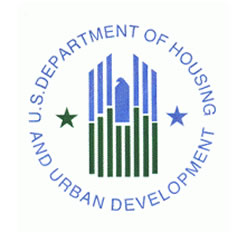1934: Federal Housing Administration Created
The Federal Housing Administration (FHA) revolutionized home ownership by creating our current financial mortgaging system. In the process, it produced a lending structure which helped to solidify the racial segregation that still exists today.
The FHA has insured over 35 million home mortgages and 47,205 multifamily project mortgages since 1934. Currently, FHA has 4.8 million insured single-family mortgages and 13,000 insured multifamily projects in its portfolio.1
The Underwriting Handbook used by the FHA endorsed the practice of redlining, which marked African-American neighborhoods as ineligible for FHA mortgages.
What is redlining?
Redlining is the practice of refusing to back mortgages in neighborhoods based on racial and ethnic composition.
The FHA’s strict lending standards, contained in the FHA Underwriting Handbook, determined which kinds of properties it would approve mortgages for. In addition to physical quality standards, the FHA based its decisions on the location, and racial and ethnic composition of the neighborhood where the property existed. For example, in 1934 the FHA Underwriting Handbook incorporated “residential security maps” into their standards to determine where to mortgages could or could not be issued.2
Developed by the Home Owner’s Loan Coalition, these were color-coded maps indicating the level of security for real estate investments in 239 American cities. The maps were based on assumptions about the community, not on the ability of various households to satisfy lending criteria.
Neighborhood Classifications
HOLC appraisers divided neighborhoods by categories including occupation, income and ethnicity of inhabitants in an attempt to eliminate subjectivity of appraisers:
- A (green) were new, homogenous areas (“American Business and Professional Men), in demand as residential location in good times and bad.
- B (blue) were “still desirable” areas that had “reached their peak” but were expected to remain stable for many years.
- C (yellow) were neighborhoods that were “definitely declining.” Generally sparsely populated fringe areas that were typically bordering on all black neighborhoods.
- D (red) (hence the term “red-lining”) were areas in which “things taking place in 3 had already happened.” Black and low income neighborhoods were considered to be the worst for lending.
These maps which separated neighborhoods primarily by race paved the way for segregation and discrimination in lending. Many argue that it was the HOLC maps that set the original precedent for racial discrimination and allowed for it to be an institutional practice.
Origin of the Federal Housing Administration (FHA)
While Americans had previously opposed government intervention in housing, they began to seek federal assistance to help revitalize the housing market which was so badly hurt during the Great Depression of 1929. Few people were able to purchase new homes, and many who already owned homes lost them due to forced sale and foreclosure. The government made many attempts to boost home ownership.
The Federal Housing Administration (FHA) is a government agency, established by the National Housing Act of 1934, to regulate interest rates and mortgage terms after the banking crisis of the 1930s. Through the newly created FHA, the federal government began to insure mortgages issued by qualified lenders, providing mortgage lenders protection from default. If a borrower failed to make their payments, the FHA was required to cover the unpaid balance. The government-insured mortgages provided stability to the housing market and increased the availability of funding for home building and purchasing.
The FHA adjusted several aspects of the housing finance system, such as increasing the maximum allowable mortgage, which made ownership widely available to many Americans. In order to obtain a mortgage, however, the FHA required that the mortgage, property, and borrower meet certain requirements, some of which led to the perpetuation of racial discrimination and urban disinvestment (see redlining).
Today, the FHA continues to work to improve housing standards and conditions, provide adequate home financing through mortgage loans, and to stabilize the mortgage market. The FHA is part of the Department of Housing and Urban Development and is the only government agency that is completely self-funded.
1. http://portal.hud.gov/portal/page?_pageid=73,1&_dad=portal&_schema=PORTAL
2. Bratt- Right to Housing p 66

